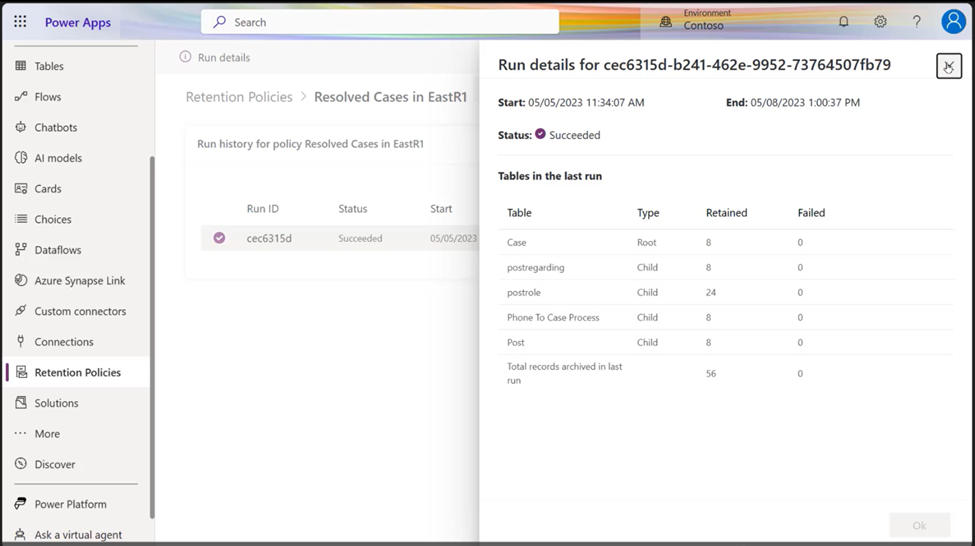Manage data retention policies
Use the retention policies dashboard to view and manage retention policies. From the dashboard, view the policy run history, update policy details, deactivate, and delete a policy.
View and manage retention policies
- Sign into Power Apps, and then on the left navigation pane select Retention policies. If the item isn’t in the side panel pane, select …More and then select the item you want.
- Select a retention policy from the list, and then on the command bar select Policy details.
- The following retention policy actions are available:
- History. Displays the retention policy run status, run start, run end and table. For every run, you can view and all tables (root and child tables) and the number of rows retained in the run.
- Policy details. Displays the properties for the policy where you can view and edit the policy name, criteria, and frequency.
- Deactivate. Stops the retention policy from running by disabling the policy schedule. To activate a deactivated policy, select Policy details, set the policy Schedule, and then select Update.
- Delete. Removes the policy.

Policy run status
| Status | Description |
|---|---|
| Scheduled | The policy has been scheduled to run. |
| In progress - Retention | The process of moving and changing the data state from active to non-active (retained) for the rows in the parent root table and all child tables. |
| Pending Reconciliation | Waiting to reconcile the retained rows in Dataverse long term retention. |
| In progress – Reconciliation | During this stage, ensures no data loss by reconciling the retained rows with the original rows before delete from active. |
| Pending Delete | Waiting to delete all retained rows. |
| In progress – Delete | Delete of retained rows from applications. |
| Completed | Retention process completed successfully. |
| Failed | The retention process failed. |
View details on failed records
Query the Dataverse table Retentionfailuredetails for error details.
| Column name | Description |
|---|---|
Operationid |
The policy runid visible in the long term retention dashboard for a specific policy run. |
entitylogicalname |
Name of the table containing the record. |
recordid |
Unique identifier of every record in the table. |
message |
Detailed error message. |
Bulk delete long term retained data
Dataverse bulk delete with the Dataverse SDK supports deletion of long term retained data. More information.
See also
Feedback
Coming soon: Throughout 2024 we will be phasing out GitHub Issues as the feedback mechanism for content and replacing it with a new feedback system. For more information see: https://aka.ms/ContentUserFeedback.
Submit and view feedback for